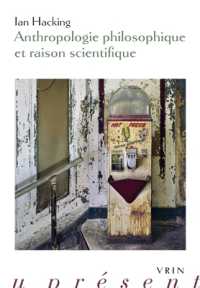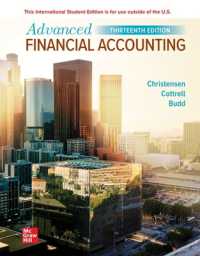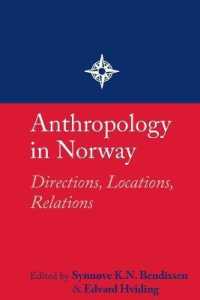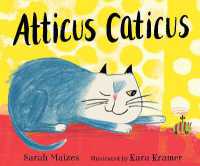基本説明
This book is a comprehensive guide to all aspects of science teaching, providing a wealth of information and ideas about different approahes.
Full Description
Now fully updated in its third edition Teaching Secondary Science is a comprehensive guide to all aspects of science teaching, providing a wealth of information and ideas about different approaches. With guidance on how children understand scientific ideas and the implications this has on teaching, teachers are encouraged to construct their own meanings and become reflective in their practice. Relating science to government agendas, such as the National Strategies, Assessment for Learning and Every Child Matters, this new edition reflects and maps to changes in national standards. Key features include: * illustrative examples for use in the classroom * theoretical grounding linked to practical application * the pros and cons of different approaches * M Level support materials * additional section on earth, atmosphere and space * advice on teaching 'difficult ideas' * education for sustainable development * managing the science classroom and health and safety * support for talk for learning, and advice on numeracy in science.Presenting an environmentally sustainable, global approach to science teaching, this book emphasises the need to build on and challenge children's existing ideas so they better understand the world in which they live. Essential reading for all students and practising teachers, this invaluable book will support those undertaking secondary science PGCEs and provides material suitable for those studying at M Level.
Contents
Preface Part Imakes a good science teacher? 2. How Science Works 3. Science education and sustainability Part II: How Children Make Sense of Their World Introduction 4. Learning through language and observation 5. Elicitation: children's ideas of the world 6. A constructivist approach to learning 7. Active learning techniques 8. Children learning through talking 9. Children learning through reading 10. Children learning through writing 11. Numeracy in science Part III: Knowledge and Understanding Introduction 12. Difficult ideas in chemistry 13. Difficult ideas in physics 14. Difficult ideas in biology 15. Difficult ideas in earth science and astronomy Part IV: Planning, Assessment, Teaching and Class Management Introduction 16. Planning for progression 17. Assessment for Learning in science 18. Assessment of 'How Science Works' 19. Managing pupils in science lessons 20. Health, safety and laboratory management 21. Teaching and learning at 14-19 Part V: Professional values and the wider world Introduction 22. Inclusion and science for all: every child matters 23. Learning outside the classroom 24. Becoming a professional science teacher List of abbreviations and acronyms References Index








